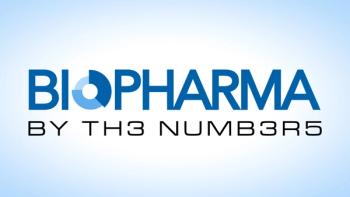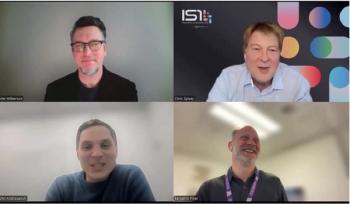
RNAnalytics Goes Beyond Nanoparticle Analysis at CPHI Frankfurt
Key Takeaways
- Personalized medicine requires rethinking quality control processes, as traditional methods are unsuitable for tailored therapies.
- AI and emerging technologies can streamline nanoparticle quality control, enhancing method development and simplifying workflows.
A wide-ranging discussion with RNAnalytics’ Viktoria Enkmann touched upon the technology and equipment necessary for modern nanoparticle analysis, as well as global concerns.
In a two-part interview (view those videos
Topics addressed by Enkmann in this conversation include advancements in quality control (QC) for nanoparticle analysis, case studies that influenced the information presented in the CPHI session, and the United States Department of Health and Human Services’
PharmTech: What effects do development bottlenecks have in the age of personalized medicine?
Enkmann (RNAnalytics): The problem of current quality control for personalized medicines is that it is built for a drug development process where we screen a lot of candidates until we single out what works well, we go through the clinics, we go to the market with an approved drug, and then we do batches of batches that thousands or millions of people receive, where we have certain quality checks that we run. But this whole concept doesn't work for personalized medicine, and therefore we really need to rethink how during drug development, but also during manufacturing and commercializing personalized medicines, we check if they are actually safe and effective.
One example in the world of RNA therapeutics, encapsulated in lipid nanoparticles, is the particle size and the encapsulation efficiency. Those are both very important quality attributes, but right now we need to run different assays on different instruments. Both consume quite some sample. The sample is very precious, especially if you have tailored it specifically for one patient, so you don't have milliliters that you can use. Therefore, it's really important to have a chance to bring these medicines to the patient as fast as possible, to work with miniaturized testing and to have a small amount of analytical equipment needed to cover a broad range of quality attributes. And this is exactly where we come in by having a single platform on which we run the assays for particle size and encapsulation efficiency.
How are AI and other emerging technologies enhancing nanoparticle quality control?
I think when you're doing analytical work for pharmaceuticals, you have two very different approaches. The one is, when you are in method development, you want to be able to tweak a lot of parameters to really make the optimal method, and then also in data processing, to set your boundaries, to have a lot of operator individualization potential to make the best method and then validate it. If you are in release testing and classical QC, you want quite the opposite of that. You want as few variables as possible and a mainly automated workflow that just ticks the boxes, and all the samples should be the same. All should adhere to the quality thresholds that you have designed before that during the validation runs, and then you can have an automated workflow that just checks the boxes.
But we want to bring the simplicity of a very automated workflow to the part where a lot of modalities are screened, but not every run looks the same, and we want to support the users by guiding them through the method development. So think of a person with 40 years of relevant experience in a pharmaceutical lab. They might know a lot about their analytes, they might know about certain quality attributes just from looking at the raw data, but they might struggle with very complex software with user interfaces, with all the automation that's happening right now.
And then on the other hand, we might have younger and less experienced people in a lab who are having an easy time implementing new software, but they don't have decades of experience. We want to bring these two together by implementing AI [artificial intelligence] features in our software. We want to guide people through method development as if there was a very experienced person sitting next to them, guiding them through all the steps. But everything needs to be traceable so we know what was actually processed, what was actually modified as in a QC workflow, so we also meet the compliance regulations.
This, together, helps us define the quality parameters that we are tracking, the boundaries of these quality parameters. And then, of course, it also allows for a much simplified routine QC.
What has been learned from the case studies detailed in your presentation?
We can robustly transform any capillary electrophoresis system that is currently used to test different quality attributes of the nucleic acids, but is currently no longer used once these nucleic acids are encapsulated in their final particles, in their final delivery form. And we can transform them into nanoparticle analytics workhorses and can run two different assays on that single platform, which has led to a tremendous decrease in operator time.
It also has drastically reduced the variability between different rounds. For instance, if you do particle size by DLS [dynamic light scattering], which is currently the gold standard, then just based on the mathematics behind processing data from light scattering, there's a power, to the power of six in the mathematical formula, which means that even a very small change in the raw signal that you're getting, it amplifies a lot. That ultimately results in having maybe a very small population of aggregates in your sample, but your whole readout is skewed because this is weighted so highly.
Using our approach, we do not see the same issue. We have a much more robust readout that works across different LNP [lipid nanoparticle] chemistries, works across different particle sizes, works across different operators and across different labs. And when we compare it to DLS, where you measure the same sample twice on the same instrument, and you get a different result just because the laser had a slightly different angle, it hit a particle at a slightly different angle, and then you get a completely different readout—our methodology is much more robust and much less prone to these variations.
This makes a great impact for labs, because we do not force our users to purchase yet another instrument, to go through the procurement process, to get it delivered, get it installed, get the people trained. We allow them to continue using the instruments that they already have and just add additional features to it. Many of the ‘shiny new toys,’ analytical instruments are just sitting in a corner and collecting dust because maybe the person that purchased it left the company, or the former expert got pregnant, or whatever. So through standardization and shipping all the pre-validated reagents with pre-validated methods, we really get rid of that variability and allow people to get insights faster and more reliably.
Can you comment on the decision by US officials to cancel contracts for mRNA-based vaccines?
That news absolutely made it over the ‘big pond,’ and it kind of shocked me very personally, because I'm a firm believer that RNA-based therapies are the drugs of the future, because it just makes sense to address diseases at their root cause and not go through all the process of making a protein in some kind of an organism and going through upscaling and downstream manufacturing and cleaning up a protein slurry, just for instance, to have an antigen made for a vaccine. It makes much more sense to just give the body the tools that it needs to present the antigen itself. So for me, personally, I can't really understand that decision.
But on the other hand, policy cycles don't really change the science, and they also do not change the need for QC [quality control]. And one of the big areas where mRNA-based therapeutics are highly relevant is oncology, and not just therapeutic vaccines. And in this area, the contracts were not canceled, so this is still going on, and even the policymakers in the US recognize that this is a very important area.
Specifically for vaccine manufacturers, vaccine developers that are facing tighter budgets now—also a lot of biotechs here in Europe have trouble fundraising and are seeing tighter budgets than they were used to in 2020–21—but especially in this current situation, I think that platform-agnostic LNP QC is more important now than ever before, because companies do not have the budget to spend hundreds of thousands of Euros or dollars on shiny new instruments that solve one task or another task.
We need to take a look at what is really needed. What data do we need to show, and how can we get to these data as efficiently as possible? And therefore, for our business model, it's not a big dealbreaker. However, on a personal level, I can't understand the decision.
I think it's a very challenging field. It is all still quite new. There was a big hype during covid. We thought RNA-based therapies are going to be the future very fast. Now, it turns out it's still going to take a little bit longer. But I personally am convinced that in 20 years, 90% of newly approved drugs are going to be based on RNA, and we need to prepare for that.
Even though the market is quite small right now, this is a technology, and this is a market segment, that is growing very quickly, and therefore, I think providing tools for scientists in this field and allowing drugs to reach the patients faster and ultimately save millions of lives is very critical.
That's what drives me, and that's what gets me up in the morning. I really see that I can make an impact with the work I do, both in driving this company forward, but [also], as we're a small company, sometimes even jumping into the lab and helping out there. It's really inspiring, and I'm excited [about] what's coming up in the next few years.
Newsletter
Stay at the forefront of biopharmaceutical innovation—subscribe to BioPharm International for expert insights on drug development, manufacturing, compliance, and more.





